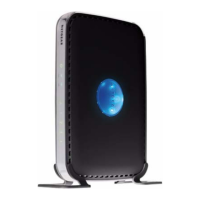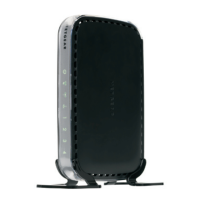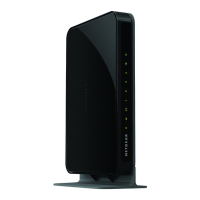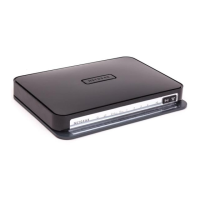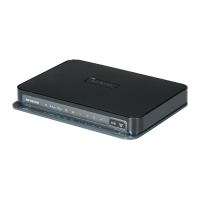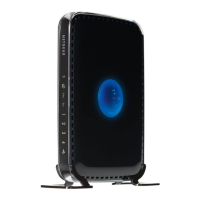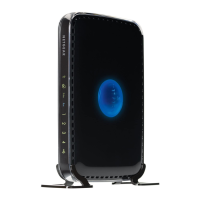20 Configuring Your Wireless Network for Internet Access
The Firmware Upgrade screen will display.
3. Click Check to check for new firmware (recommended). The router will automatically check
the NETGEAR database for a new firmware image file. If no new firmware version is
available, the message “No New Firmware Version Available” will display. (If you selected
“No,” you can check for new firmware later; see “Configuring Your Wireless Settings and
Security Options” on page 20.)
4. If new firmware is available, click Yes , and the router will automatically upgrade itself with
the latest firmware.
Configuring Your Wireless Settings and Security
Options
The wireless network settings of the router must match the wireless network settings of any
wireless devices that connect wirelessly to the router (such as wireless adapter cards and wireless
computers).
For a wireless connection, the router and each wireless computer must use the same SSID, also
called the wireless network name, and the same wireless security. NETGEAR strongly
recommends that you use wireless security.
The Wireless Settings screen lets you set your wireless network connections and the wireless
security option for your network and router. To configure the wireless network, you can either
manually specify your network name (SSID) and your wireless security settings (see “Setting
Your SSID and Wireless Security Manually” on page 21) or, if the clients in your network are
WPS capable, you can use Wi-Fi Protected Setup (WPS) to automatically set the SSID and
Do not try to go online, turn off the router, shut down the computer, or do
anything else to the router until the router finishes restarting and the Ready light
stops blinking!
Indoors, computers can connect over wireless networks at a range of several
hundred feet. This can allow others outside of your immediate area to access your
network.
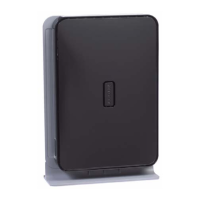
